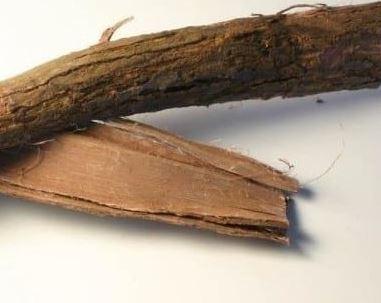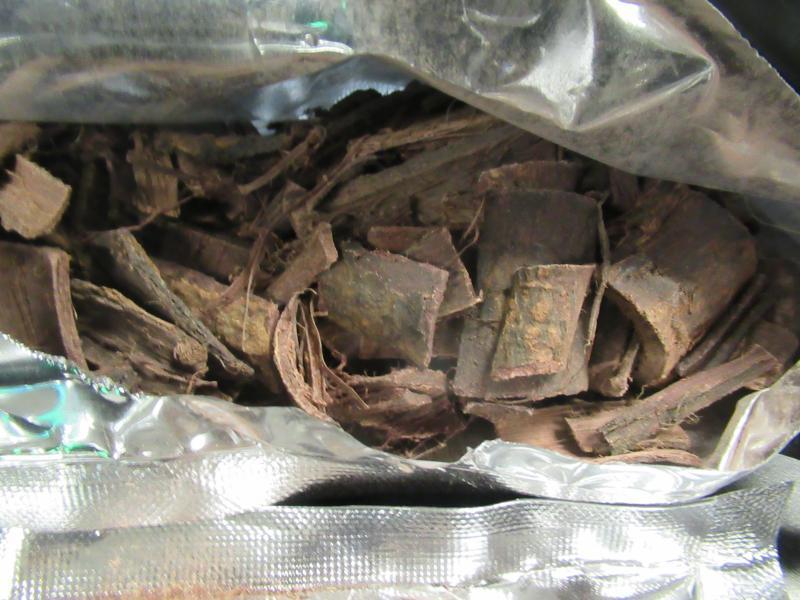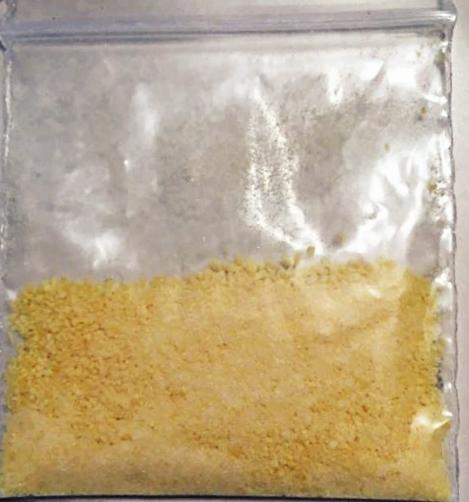What Does DMT Look Like?
DMT is typically found in powder form, which ranges in color from white to yellow to brown. The powdered form of DMT is most commonly smoked or mixed in drinks for consumption. DMT is also found in a crystallized form that is similar in appearance to small translucent or white crystals.
The crystallized form of DMT can be broken down into a fine powder before consumption. In some cases, DMT is also found in herbal blends or infused into snuff or other substances, making it difficult to recognize the drug by its physical appearance alone. However, it’s always essential to remember that DMT is a potent psychedelic drug with serious and long-lasting effects on a person’s mental and physical health.
While DMT is a naturally occurring psychedelic compound, it is still illegal in most parts of the world. It can have severe and long-lasting effects on a person’s mental and physical health, including hallucinations, anxiety, paranoia, and even psychosis. It is essential to avoid using drugs and to seek professional help and support if you or someone close to you is struggling with substance abuse.
DMT Images and DMT Drug Pics
DMY in Plants
DMT (Dimethyltryptamine) is a powerful psychedelic compound that occurs naturally in several plants. One of the most commonly known DMT-containing plants is Ayahuasca, a blend of a vine called Banisteriopsis caapi and the leaves of a shrub called Psychotria viridis. Here is a description of these two plants:
Banisteriopsis caapi:
Banisteriopsis caapi is a vine that is native to the Amazon rainforest. It is commonly used to create Ayahuasca. The vine is characterized by its thin, woody, and flexible stem. The leaves of the plant are small, green, and oval-shaped. The vine can grow up to several hundred feet long and can climb trees and other plants.
Psychotria viridis:
Psychotria viridis is a tall and bushy plant native to the Amazon rainforest. The leaves of the plant are a bright green color and are long and oval-shaped. The plant may grow up to 10 feet tall, with small, white flowers that bloom throughout the year.
DMT can also be synthesized in a laboratory, which is considered illegal in most countries. While DMT-containing plants have been used for centuries in traditional healing practices, their use is illegal in many parts of the world. It is always best to consult with trained professionals before using any substance.
About the DMT Drug
DMT, also known as dimethyltryptamine, is a powerful hallucinogenic drug that has gained popularity recently due to its intense and often otherworldly effects. DMT has been used for centuries in shamanic practices and religious ceremonies as a naturally occurring substance in many plants and animals.
However, the rise of the internet and social media has brought DMT into the mainstream, with an increasing number of people seeking out the drug and sharing their experiences through “DMT drug pics” on various online platforms.
While the allure of DMT’s mind-bending effects has drawn many users to experiment with the drug, it’s important to note that significant risks are involved. Like any powerful substance, DMT can have serious side effects during and after use. In addition to the immediate risks of psychosis, seizures, and other health complications, long-term use of DMT has been linked to mental health issues such as depression, anxiety, and even schizophrenia.
Despite these risks, the popularity of DMT continues to grow, with many users sharing their experiences through vivid visual depictions known as “DMT drug pics.” These images often feature psychedelic landscapes, intricate patterns, and otherworldly beings, reflecting the intense and transformative nature of the DMT experience.
As interest in DMT spreads, it’s important to approach the drug with caution and awareness of its potential side effects. While the allure of “DMT drug pics” may be tempting, it’s crucial to remember that using any substance carries significant risks, both for the individual and those around them.
How is DMT Taken?
DMT (dimethyltryptamine) can be used in several ways, although smoking is the most common. DMT usually has a powerful and quick onset of effects that persist for 15 to 30 minutes when smoked.
- Sniffed
- Smoked
- Injected
DMT Images
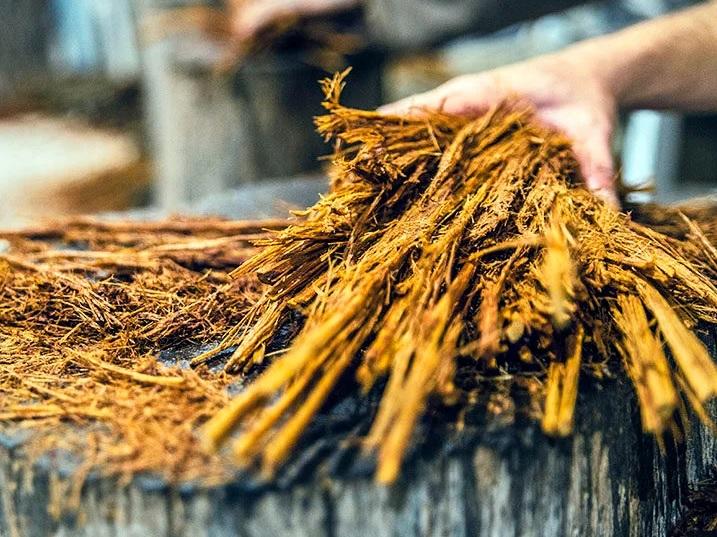
Skip To:
Learn More:
- What is DMT Drug? Effects, Facts, & Substance Abuse Risks
- DMT Tripping, What Is It Like & What Are The Risks?
- DMT Brain, Side Effects & Health Risks of DMT on the Brain
- DMT Street Names. What is DMT Slang Name? DMT Side Effects, Is DMT Addictive? DMT Dangers.
- Long-Term Effects Of LSD
- Are Psychedelics Addictive?
- Hallucinogens
- What is Mescaline? Effects, Risks & Treatment
- Are Shrooms Addictive? Psilocybin Mushroom Risks & Addiction
- How Long Do Shrooms Last? How Long Do Shrooms Stay in Your System? How Long Do Psilocybin Mushrooms Last?
- Mushrooms Drug
- How To Get Unhigh Fast? Sobering Up From Weeds & Drug Abuse.
DMT Street Names
Here are some popular street names for DMT and the basis for the various DMT slang names:
- Dimitri: This is a common slang term for DMT, named after the inventor of the popular smoking device used to take the drug.
- Businessman’s Trip: This term refers to a quick and intense DMT experience like a short business trip.
- Fantasia: This name is often used to describe the vivid and intense visual experiences that DMT can produce, like a colorful dream or fantasy.
- The Spirit Molecule: This name is derived from the book and documentary film of the same name by Dr. Rick Strassman, who conducted clinical studies on DMT in the 1990s.
- The Light refers to some people’s profound spiritual experiences while on DMT.
Is DMT Addictive?
Some users of DMT, particularly those looking for strong and profound experiences, may develop psychological addictions to it.
Addiction and substance use problems can result from DMT usage. This is because DMT users may develop a strong demand for the drug’s distinctive experiences, driving them to seek it out despite the risks frequently. This pattern of use over time may result in addiction, which is difficult to get rid of on your own.
Dangerous DMT Effects
DMT has many risks, but one of the biggest is the possibility of physical and mental harm. DMT use can have many negative effects, some of which are listed below because of its potent impact on the mind and body:
- Anxiety.
- Paranoia.
- Nausea.
- Vomiting.
- Seizures.
In some circumstances, dormant mental health disorders like schizophrenia or bipolar disorder might be triggered by DMT, with potentially fatal results.
When parents, teachers, and other concerned parties learn about DMT, it might be difficult for them to identify the drug and act to stop any harm from occurring.
In conclusion, while DMT use carries several hazards that should not be disregarded, it may also provide exceptional and profound spiritual experiences. It can be difficult to spot DMT users and take appropriate action before harm is done because of its street names and slang phrases.
To avoid negative consequences and addiction, it is crucial to spread knowledge about the hazards of DMT and assist people in making wise decisions regarding their substance usage.
Get Help. Get Better. Get Your Life Back.
Searching for Accredited Drug and Alcohol Rehab Centers Near You?
Even if you have failed previously and relapsed, or are in the middle of a difficult crisis, we stand ready to support you. Our trusted behavioral health specialists will not give up on you. When you feel ready or just want someone to speak to about therapy alternatives to change your life call us. Even if we cannot assist you, we will lead you to wherever you can get support. There is no obligation. Call our hotline today.
(844) 597-1011Popular DMT Drug Pics FAQs
-
What Does A DMT Trip Look Like?
A DMT trip can vary greatly from person to person, but many users report experiencing vivid and intense visual hallucinations, such as geometric shapes, fractals, and kaleidoscopic patterns. Some users also report encounters with entities or otherworldly beings. The experience can be overwhelming and transformative, often described as a “breakthrough” or “ego-death.”
-
What DMT Looks Like?
DMT can appear in various forms, including a white or off-white crystalline powder, a yellow or orange paste, or a brownish-red resin. It can also be extracted from certain plants and consumed as liquid or vapor.
-
How Does DMT Look Like?
DMT can appear in various forms, as mentioned above. It can be a white or off-white crystalline powder, a yellow or orange paste, or a brownish-red resin.
-
What A DMT Trip Looks Like?
A DMT trip can be difficult to describe, as it varies greatly from person to person. Many users report experiencing intense visual hallucinations, such as geometric shapes, fractals, and kaleidoscopic patterns, along with profound euphoria and connectedness. Some users also report encounters with entities or otherworldly beings. The experience can be overwhelming and transformative, often described as a “breakthrough” or “ego-death.”
-
What DMT Trip Looks Like?
A DMT trip can look different for each individual. However, many users report experiencing intense visual hallucinations, such as geometric shapes, fractals, and kaleidoscopic patterns. Some users also report encounters with entities or otherworldly beings. The experience can be overwhelming and transformative, often described as a “breakthrough” or “ego-death.”
-
What It Looks Like On DMT?
When under the influence of DMT, users often experience intense visual and auditory hallucinations and feelings of euphoria and connectedness. These experiences can be difficult to describe, but many users report seeing vivid geometric shapes, fractals, and kaleidoscopic patterns and encountering entities or otherworldly beings. It’s important to note that the effects of DMT can be overwhelming and unpredictable and vary greatly from person to person.
DMT Drug Facts
DMT Drug Overview
DMT, or N,N-Dimethyltryptamine, is a potent psychedelic drug that produces profound and intense hallucinations when ingested. It is classified as a Schedule I controlled substance in the United States, meaning it is illegal to manufacture, distribute, or use for non-medical purposes. DMT can be extracted from several plant sources and synthesized in a laboratory. The drug is typically consumed by smoking, vaporizing, or injecting. Its effects can last for several minutes to an hour, depending on the dose and method of administration.
DMT Drug Addiction Treatment
There is no specific medication for DMT addiction treatment. However, behavioral therapy, such as cognitive-behavioral therapy (CBT), can help individuals understand their addiction and develop coping mechanisms to manage cravings and triggers. Group therapy, support groups, and holistic therapies such as mindfulness and yoga may also help address DMT addiction. Seeking professional help from addiction treatment centers is highly recommended for individuals struggling with DMT addiction.
How is DMT Used?
Here are some common methods of taking DMT:
- Smoking: Most people smoke DMT by adding it to a pipe or vaporizer and heating it until it becomes vapor, which is then inhaled. This method provides a quick and intense effect.
- Intravenous injection: DMT can also be injected intravenously, providing a fast onset of effects lasting up to 30 minutes.
- Oral consumption: DMT is also sometimes consumed orally, either through brewing it as a tea or in combination with other plants that contain MAO inhibitors, which can enhance the effects of DMT.
No matter how it is taken, DMT can cause intense and potentially overwhelming effects, including visual and auditory hallucinations, changes in perception of time and space, and altered states of consciousness. It is important to keep these potential risks in mind and to use caution and respect when taking DMT in any form. DMT is illegal in many countries and carries serious legal and health risks.
DMT Slang Names
Here are some of the most common DMT slang names:
- Dimitri.
- Businessman’s Trip.
- Fantasia.
- The Spirit Molecule.
- 45-Minute Psychosis.
- Businessman’s Special.
- 5-MeO-DMT.
- Spice.
- The Light.
- The Ultimate Adventure.
DMT Effects
DMT can cause various physical and psychological effects. Physically, it can cause increased heart rate, blood pressure, body temperature, nausea, vomiting, and diarrhea.
Psychological effects can include intense hallucinations, altered perception of reality, and potentially severe psychological distress or even psychosis.
DMT use can be especially dangerous for individuals predisposed to mental health conditions such as anxiety, depression, bipolar disorder, or schizophrenia. The potential risks are compounded by the fact that it is not regulated due to its illegal status, nor is it possible to know what substances may be mixed with it.
It’s highly recommended that anyone considering using DMT should fully understand the potential risks and thoroughly research the drug to make an informed decision. If you or someone you know is struggling with substance abuse, seeking help from a medical or mental health professional is important.
DMT Drug Statistics
DMT, also known as N,N-Dimethyltryptamine, is a potent psychedelic drug recently gaining popularity. Although the use of DMT is relatively rare, there has been a rise in its consumption among specific populations. To identify trends and potential risks related to its use, it is essential to comprehend the statistics on DMT drug consumption.
Due to regulatory and logistical hurdles, scientific research on DMT has been limited. However, a few studies have been conducted, and the outcomes reveal the following information:
- Brain activity: Research suggests that DMT can enhance activity in some brain regions, including the default mode network, which is responsible for self-referential thinking and mind-wandering. This implies that DMT could induce a state of introspection and self-reflection.
- Psychological effects: DMT can cause various psychological effects, such as visual hallucinations, feelings of euphoria, and mystical experiences. Some studies have shown that DMT could generate spiritual or transcendental experiences, improving well-being. However, others have pointed to negative psychological effects like anxiety and paranoia.
- Therapeutic potential: Although the study of the therapeutic potential of DMT is still in the early stages, some research has suggested that it could be a promising treatment for conditions such as depression, anxiety, and post-traumatic stress disorder (PTSD). Nonetheless, more research is necessary to establish its safety and effectiveness for medical purposes.
While early research on DMT has produced interesting findings, additional studies are required to fully understand its potential benefits and risks. Suppose you or someone you know is considering using DMT. In that case, it is vital to weigh the potential benefits against the risks carefully and consult a medical or mental health professional beforehand.
721,000
Approximately 0.3% of adults aged 18 or older reported using DMT in the past year, translating to around 721,000 individuals.
Source: National Survey on Drug Use and Health
213%
SAMHSA reported a 213% increase in emergency department visits related to DMT use from 2014 to 2018.
Source: SAMHSA
The Most Common
A study found that DMT use was more common among individuals who reported previous use of other illicit substances, including LSD, psilocybin mushrooms, and ecstasy.
Source: Journal of Psychopharmacology

Get Your Life Back
Find Hope & Recovery. Get Safe Comfortable Detox, Addiction Rehab & Dual Diagnosis High-Quality Care.
Hotline(844) 597-1011DMT What Does It Look Like?
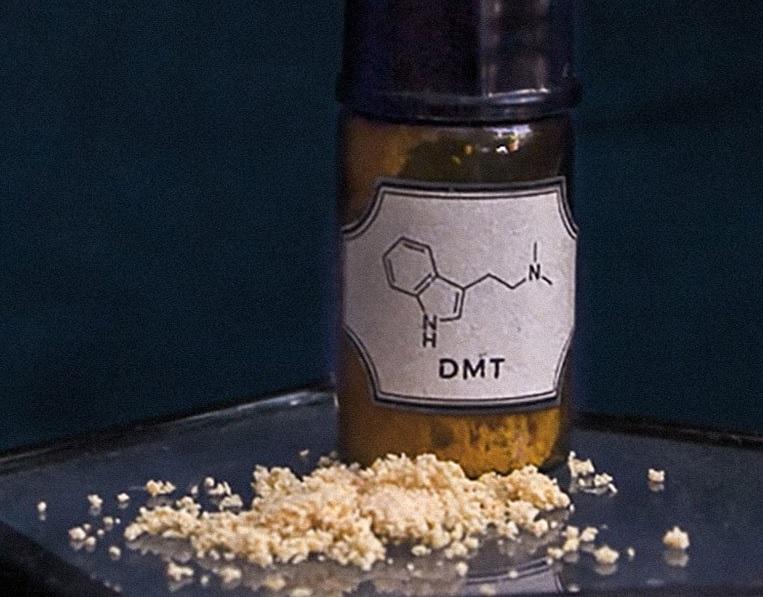
What Does 50 Mg Of DMT Look Like?
DMT, or N,N-Dimethyltryptamine, is a powerful psychedelic drug that can induce intense visual and auditory hallucinations and profound emotional and spiritual experiences. DMT can be found naturally in some plants, such as ayahuasca, or synthetically produced in laboratories.
DMT can be consumed in various forms, each with its unique set of effects and methods of ingestion. The following are some of the most common ways that DMT is consumed:
How DMT Looks Like?
- Smoking: Smoking DMT is one of the most common and effective consumption methods. The user heats up the DMT until it vaporizes and then inhales the vapor. The effects of smoking DMT are rapid and intense, with a sudden onset of vivid and complex hallucinations that can last for 15-30 minutes.
- Vaporizing: Vaporizing DMT involves heating up the drug until it vaporizes without the need for any burning. This method can be achieved with a vaporizer or a glass pipe. Vaporizing DMT is similar to smoking, with the rapid and intense onset of effects.
- Ingesting: Ingesting DMT orally can be achieved by brewing it into a tea, mixing it with other herbs, or consuming it in capsule form. The effects of ingesting DMT orally are much more gradual and prolonged than smoking or vaporizing, with the onset of effects taking up to an hour and lasting several hours. When consumed orally, DMT must be combined with an MAO inhibitor to prevent the body from breaking it down before it can take effect.
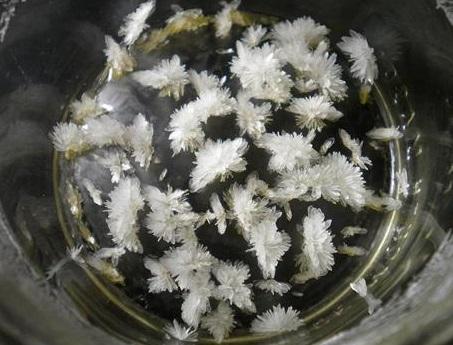
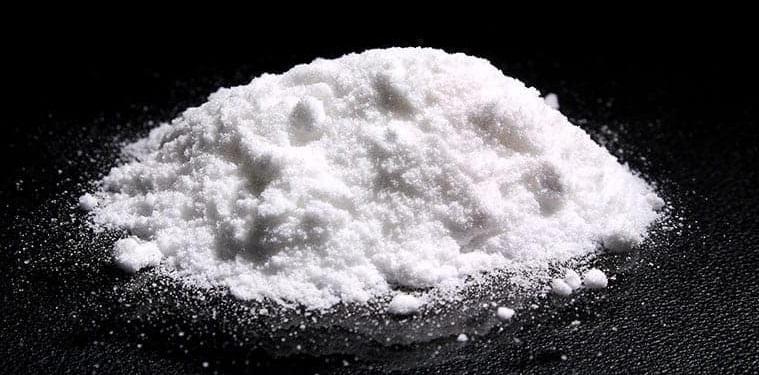
What Does DMT Trip Look Like?
- Intravenous Injection: Intravenous injection is the most potent and direct method of DMT consumption but also the riskiest. DMT is injected into the bloodstream, resulting in an almost instant and intense hallucinogenic experience. Experienced individuals should only attempt this method in a controlled medical setting.
- Insufflation: Insufflation, or snorting, DMT involves inhaling the powdered drug through the nose. This method can be highly uncomfortable and ineffective than other consumption methods.
It is crucial to note that DMT is a highly potent substance with intense psychological and physical effects. While some users may experience profound spiritual or therapeutic experiences, others may have negative experiences, such as anxiety, paranoia, and hallucinations. It is important to approach DMT use cautiously and in a controlled setting with a trusted individual experienced in its consumption.
In conclusion, DMT can be consumed in various forms, each with its unique set of effects and methods of ingestion. Smoking and vaporizing are the most common and effective methods of consumption while ingesting DMT orally, and intravenous injection can also be achieved with careful consideration and supervision. It is important to remember that DMT is a potent substance that should be approached cautiously, and its consumption should be done under careful medical or professional supervision.
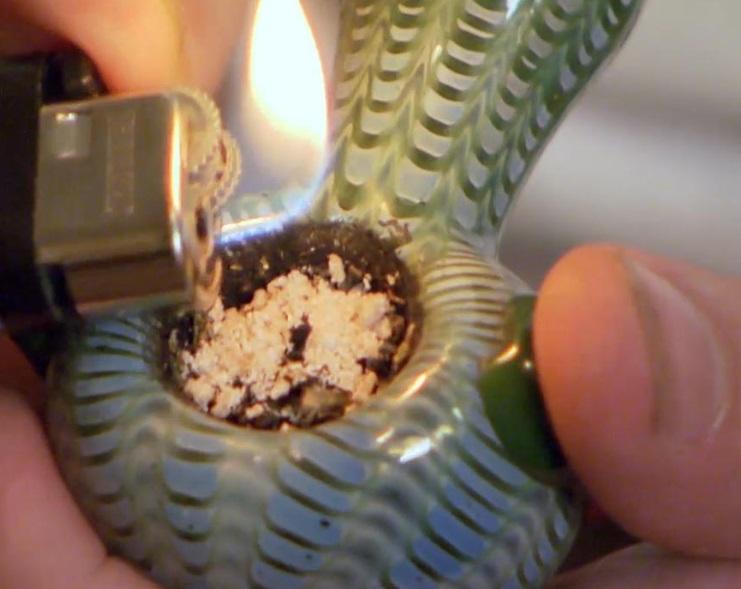
First-class Facilities & Amenities
World-class High-Quality Addiction & Mental Health Rehabilitation Treatment
Rehab Centers TourRenowned Addiction Centers. Serene Private Facilities. Inpatient rehab programs vary.
Addiction Helpline(844) 597-1011Proven recovery success experience, backed by a Team w/ History of:
15+
Years of Unified Experience
100s
5-Star Reviews Across Our Centers
10K
Recovery Success Stories Across Our Network
- Low Patient to Therapist Ratio
- Onsite Medical Detox Center
- Comprehensive Dual-Diagnosis Treatment
- Complimentary Family & Alumni Programs
- Coaching, Recovery & Personal Development Events
DMT Addiction Treatment

DMT, or N,N-Dimethyltryptamine, is not considered addictive traditionally, as it does not cause physical dependence. However, some individuals may struggle with compulsive use or experience negative consequences related to drug use.
If you or someone you know is struggling with DMT use, seeking professional help can be beneficial. Treatment for DMT-related issues often involves behavioral therapies such as cognitive-behavioral therapy (CBT) or motivational interviewing (MI). These approaches can help individuals identify and change problematic patterns of thought and behavior that contribute to their DMT use.
CBT is a therapy that helps individuals identify and challenge negative thought patterns that contribute to addictive behavior. This approach can be helpful for those struggling with DMT use by helping them recognize triggers and develop coping mechanisms to prevent relapse.
MI is another approach that can be useful for individuals seeking to overcome DMT addiction. This type of therapy focuses on building motivation and self-efficacy, empowering individuals to take control of their addiction and make positive changes in their lives.
In addition to therapy, support groups and peer counseling can benefit those recovering from DMT addiction. These resources provide a sense of community and support, allowing individuals to share their experiences and provide encouragement to one another.
Overall, seeking professional help and engaging in therapy and support groups can be helpful for individuals struggling with DMT addiction. With the right support and resources, overcoming addiction and living a fulfilling life in recovery is possible.
World-class, Accredited, 5-Star Reviewed, Effective Addiction & Mental Health Programs. Complete Behavioral Health Inpatient Rehab, Detox plus Co-occuring Disorders Therapy.
CALL(844) 597-1011End the Addiction Pain. End the Emotional Rollercoaster. Get Your Life Back. Start Drug, Alcohol & Dual Diagnosis Mental Health Treatment Now. Get Free No-obligation Guidance by Substance Abuse Specialists Who Understand Addiction & Mental Health Recovery & Know How to Help.
What Does DMT Look Like? We Level Up Dual Diagnosis Treatment
The definition of dual diagnosis (also referred to as co-occurring disorders) can differ between institutions. However, it is generally described as the specific treatment of someone diagnosed with a substance use disorder and a mental health disorder simultaneously. Treating dual-diagnosis clients is a critical aspect of our inpatient treatment experience because co-occurring disorders are strongly correlated with instances of substance abuse.
Creating a treatment plan that addresses the physical aspects of withdrawal, the psychological connection with drug use, and managing underlying mental health disorders is part of setting clients up for success. A thorough mental health analysis identifies possibilities for treatment. Meeting with mental health counselors and medical care providers means access to behavioral therapy and medication treatment. At our dual diagnosis treatment center, We Level Up can implement the highest quality of care.
We recognize the fragile complexities of how mental and substance abuse disorders can influence others and sometimes result in a vicious cycle of addiction. That’s why we offer specialized treatment for dual-diagnosis cases to provide the most excellent chance of true healing and long-lasting recovery.
Accepting that you may be living with a mental illness can be challenging. However, treating the presenting substance abuse case can be magnitudes easier once properly diagnosed and treated. Only a properly trained medical professional can diagnose these underlying conditions. If you believe you are suffering from a disorder alongside addiction, we urge you to seek a qualified treatment center to begin your journey to recovery. Call We Level Up addiction detox centers today.
Experience Transformative Recovery at We Level Up Treatment Centers.
See our authentic success stories. Get inspired. Get the help you deserve.
Start a New Life
Begin with a free call to an addiction & behavioral health treatment advisor. Learn more about our dual-diagnosis programs. The We Level Up Treatment Center Network delivers recovery programs that vary by each treatment facility. Call to learn more.
- Personalized Care
- Caring Accountable Staff
- World-class Amenities
- Licensed & Accredited
- Renowned w/ 100s 5-Star Reviews
We’ll Call You
Watch Amber’s Truly Inspiring, Heart Warming Addiction Recovery Story Video. DMT Drug Pics and Overcoming Addiction.
“My name is Amber, I’ve been sober 18 months and my clean day is August 6, 2020. Today I can wake up and feel like a human being again rather than a shell of a person. I have people I can count on today that actually wanna, you know, to support me and see me do good in life and who push me to do good in life. My, my serenity and my peace of mind.”
Amber’s Addiction Recovery Story
Search We Level Up DMT Drug Pics Resources
Sources
- National Institute on Drug Abuse: https://www.drugabuse.gov/drug-topics/hallucinogens
- Substance Abuse and Mental Health Services Administration: https://www.samhsa.gov/
- Drug Enforcement Administration: https://www.dea.gov/
- Department of Justice: https://www.justice.gov/
- Centers for Disease Control and Prevention: https://www.cdc.gov/
- National Institutes of Health: https://www.nih.gov/
- National Survey on Drug Use and Health: https://www.samhsa.gov/data/data-we-collect/nsduh-national-survey-drug-use-and-health
- Office of National Drug Control Policy: https://www.whitehouse.gov/ondcp/
- Substance Abuse Prevention and Treatment Block Grant: https://www.samhsa.gov/grants/block-grants
- Office of National Statistics: https://www.census.gov/
